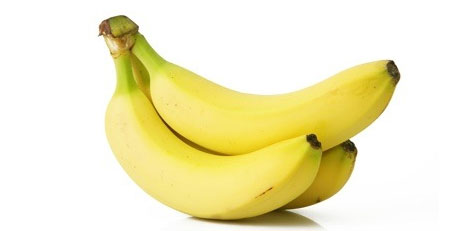No. of views : (4439)
More about foods that resemble the body part they benefit
Posted on: 26/Jul/2016 9:49:39 AM

You are what you eat. The food that you eat, decides the way your body functions. It is very essential to have healthy food habits for a healthy body. Studies have shown that fruits and vegetables resemble those body organs that they are known well for. Often these fruits and vegetables are known to fulfil the nutrient requirements of the resembling body part. The Doctrine of Signatures, an ancient European philosophy, declares that plants, animals and minerals often carry cues in their shape or actions, which tells us about their hidden purpose. Here are a few foods that look similar to the body part they benefit.
Bananas help in being happy. This magic fruit contains Tryptophan, a protein, which once digested, gets converted into a chemical neurotransmitter called, Serotonin. Serotonin is known as the happy chemical and is one of the most important mood-regulating chemicals in the brain. Higher levels of Serotonin can generate better moods.
Carrots are good for the eyes. If you slice a carrot in half, the middle portion mirrors the pattern of an eye. Taking a closer look reveals the pattern resembling the lines of the pupil and iris. Carrots are abundantly packed with vitamins and anti-oxidants, and they also contain beta-carotene, a plant chemical, which gives them their orange colour. Beta-carotene reduces the risk of developing cataracts and protects against muscular degeneration, the major cause of loss of vision in older people. Consuming carrots can also enhance blood flow, improving the functioning of the eye.
Walnuts are good for the brain. The creases and wrinkles on walnuts look similar to those of the brain. It also has left and right hemispheres. Walnuts contain a high content of Omega-3 fatty acids and develop over three dozen neuron transmitters, which supports brain function. Walnuts are also effective in warding off dementia and have been found to break down the protein-based plaques associated with Alzheimer’s disease.
Celery is good for the bones. It is a great source of silicon, a component of the molecular structure that gives bones strength. Interestingly, both the bones and celery contain 23 per cent sodium. Eating a diet that is low on sodium, forces the body to pull sodium from the bones, which make them weak. Therefore, it is essential to take celery on a balanced basis for healthier and stronger bones.
Oranges and grapefruits benefit the breasts. They have great similarity with the internal structure of breasts and are in fact, good for them. They aid the movement of the lymph in and out of the breast. Grapefruits contain substances called limonoids, which prevent the development in human breast cells.
The pancreas is benefited by sweet potatoes. They contain huge amounts of beta-carotene, which is an antioxidant that protects tissues of the body from damage related with cancer or ageing. They are also great for diabetic patients, as they help balance the glycemic index – a measure carried out on carbohydrate g food to work out their impact on blood sugar.
Tomatoes are very good for the heart. If you notice a sliced tomato, you will see that it reveals multiple chambers that resemble the structure of a human heart. Tomatoes contain Lycopene, a plant chemical that reduces the risk of heart diseases and several cancecers. Mixing them with healthy fats like, olive oil or avocado can boost the body’s Lycopene by ten times. Lycopene also j help counter the effect of unhealthy cholesterol.
Red wine is good for the blood. Wine is rich in antioxidants and polyphenols, which prevent cell damage, including powerful resveratrol. Also, drinking wine reduces chances of cholesterol, which can cause heart diseases. It helps to reduce blood clots as well, as there is a blood thinning compound present in it. Of course, it must be consumed in moderation.
Avocados are good for the uterus. They resemble the shape of a light bulb, so does the uterus. Since the fruit is a great source of folic acid, it helps to reduce the risk of cervical dysplasia, which is a pre-cancerous condition. Having one avocado every week can help balance hormones, shed unwanted birth weight and prevent cervical cancers in women. The strange coincidence is that, an avocado takes exactly nine months to grow a blossom to a ripened fruit.
Grapes are great for the lungs. The alveoli, which are the branches of small airways that end with tiny bunches of tissue, in our lungs which resemble bunches of grapes, allow the passage of oxygen from the lungs to the blood stream. Grapes have been shown to minimise the risk of lung cancer and emphysema. Grape seeds contain a chemical called proanthocyanidin, which can reduce the severity of asthma triggered by allergy.
Ginger benefits the stomach. Root ginger has been found to be the most important component aiding digestion. It has been used as one of the most effective home remedies for curing nausea and motion sickness since ages. Gingerol is the ingredient responsible for ginger’s distinctive smell and taste. It has also found its place in the US Department of Agriculture’s database of phytochemicals, as having the ability to prevent nausea and vomiting.
Hear better with mushrooms. Mushrooms which resemble an ear have the ability to improve hearing in humans.
They contain Vitamin D, which is vital for healthy bones - even the tiny ones in your ear that carry sound to your ear.







